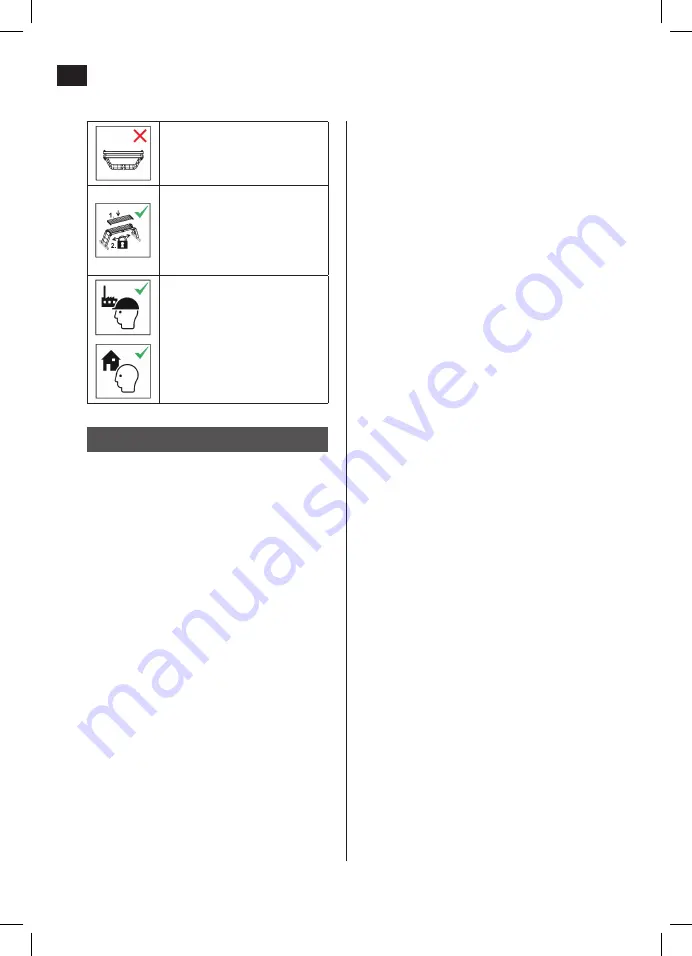
EN
20
• The stepladder must stand on its feet and
not rest on a step.
• Do not put the stepladder on slippery surfaces
(for example, ice, shiny surfaces or heavily
soiled surfaces) unless additional measures
are taken to prevent it from slipping.
• Do not exceed the maximum load for the
stepladder.
• Do not overreach. The user must keep the
belt buckle (navel) inside the side rails
and both feet on the same step when
working.
• Do not go on the 4 top steps on a standing
ladder with an extension ladder above.
• Do not get off the stepladder at a higher
level without additional safety measures,
for example a suitable device to improve
stability.
• Do not use standalone ladders to get to
another level.
• Do not stand on the top three steps of a
lean-to ladder.
• Do not stand on the top two steps of a
stepladder without a platform and
handrail.
• Do not stand on the top four steps of a
stepladder with an extended step above.
• Stepladders use to access a higher level
must extend at least 1 metre past the
stepping off point.
• Stepladders must only be used for simple
jobs for short periods.
• Do not use the stepladder outdoors in bad
weather, for example in strong wind.
• Take precautions to prevent children
playing on the stepladder.
• Face the stepladder when climbing up or
down the steps.
Do not use the work platform
upside down.
When using as a platform only
use the cover recommended
by the manufacturer. Secure
the cover before use.
The ladder is intended for
professional use.
USE
• The stepladder must be put up in the
correct position, for example at the
correct angle if using as a lean-to ladder
(tilt angle 1:4) with the steps horizontal.
• Locks, if available, must be fully locked
before use.
• The stepladder must be placed on a
smooth, level and stable base.
• As a lean-to ladder it must lean against a
smooth, stable surface and be fastened
with a stable device before use.
• Never move the stepladder from above.
• When positioning the stepladder take into
consideration the risk of collision, e.g.
with pedestrians, vehicles or doors. Lock
doors (not emergency exits) and windows
in the work area, where possible.
• Identify potential risks in the work area,
such as high-tension cables or exposure to
electrical components.


























